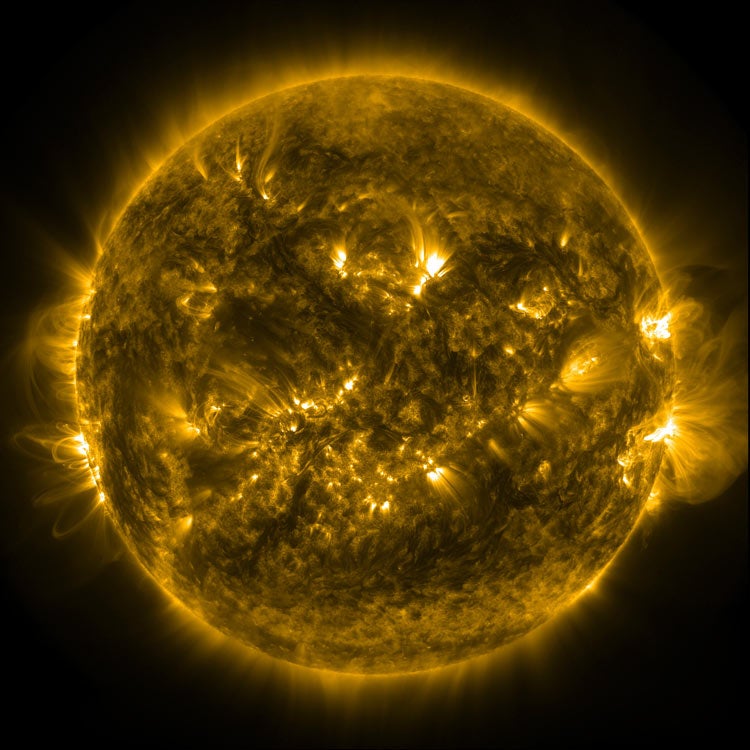Stanford University | 2015 Jan 14
Though scientists do not completely understand what triggers solar flares, Stanford solar physicists Monica Bobra and Sebastien Couvidat have automated the analysis of those gigantic explosions. The method could someday provide advance warning to protect power grids and communication satellites.
Solar flares can release the energy equivalent of many atomic bombs, enough to cut out satellite communications and damage power grids on Earth, 93 million miles away. The flares arise from twisted magnetic fields that occur all over the sun's surface, and they increase in frequency every 11 years, a cycle that is now at its maximum.
Using artificial intelligence techniques, Stanford solar physicists Monica Bobra and Sebastien Couvidat have automated the analysis of the largest ever set of solar observations to forecast solar flares using data from the Solar Dynamics Observatory (SDO), which takes more data than any other satellite in NASA history. Their study identifies which features are most useful for predicting solar flares.
Specifically, their study required analyzing vector magnetic field data. Historically, instruments measured the line-of-sight component of the solar magnetic field, an approach that showed only the amplitude of the field. Later, instruments showed the strength and direction of the fields, called vector magnetic fields, but for only a small part of the sun, or part of the time. Now an instrument on a satellite-based system, the Helioseismic Magnetic Imager (HMI) aboard SDO, collects vector magnetic fields and other observations of the entire sun almost continuously. ...
Solar Flare Prediction Using SDO/HMI Vector Magnetic Field Data with a Machine-learning Algorithm - Monica G. Bobra, Sebastien Couvidat
- Astrophysical Journal 798(2) 135 (2015 Jan 10) DOI: 10.1088/0004-637X/798/2/135
arXiv.org > astro-ph > arXiv:1411.1405 > 05 Nov 2014
